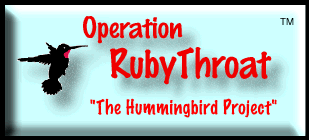|
|
|||
|
Rufous Hummingbirds Y14572 (above left) and Y14573 All text & photos © Hilton Pond Center Several summers ago at one of our "Hummingbird Mornings" programs, we met Nancy and Dick Dietz of Statesville NC. The Dietz's became supporters of Hilton Pond Center and have continued to enjoy feeding hummers. They even heeded our advice to keep up a feeder after the breeding population of Ruby-throated Hummingbirds departs in autumn, so--being really good people--it was only a matter of time until they started getting WINTER hummingbirds in their yard. In fact, they apparently had one that came and went back in November 2001, and--after a five-year "drought"--another appeared the week after Thanksgiving 2006. Nancy sent us an e-mail on 4 December about this "late" hummingbird still frequenting her feeders, so we laid plans to visit the Dietz residence to capture the hummer for banding. The next day, Nancy sent a follow-up message stating she was almost sure there were not one but TWO hummingbirds, based on her observations that one perched while feeding and the other hovered. This news made us even more eager to make the two-hour drive up I-77 to Statesville to identify and band the birds, so the Dietz's arranged for us to arrive before sunrise on 9 December 2006.
Y14572 (above) and Y14573 (below)
We like to be at winter hummer locales VERY early in the day because of past successes catching these birds when we set the trap before first light; after all, a hummingbird has been fasting all night and undoubtedly is hungriest when it makes its first feeder visit of the morning. Thus, we got to Statesville pre-dawn at 6 a.m. Nancy and Dick greeted us warmly--and a good thing, too, since temperatures were in the teens. We quickly moved their feeder into our trap and hung the whole apparatus on a shepherd's crook just outside the Dietz's sun porch. Despite a little ambient light from the house it was still pitch-dark outside, so we sat down at 6:17 a.m. with the Dietz's--and with Nancy's sister Lin Bell, who had driven down from King NC--to await the arrival of one (or more) hummingbirds.
Y14572 (above) and Y14573 (below)
To be honest, we couldn't see a thing from where we sat, but Nancy was closer to the trap and had a little backlighting that allowed her to see the silhouette of a hummer approaching at 6:48 a.m. According to Nancy, the bird flew directly into the trap, sat on the perch, and began drinking away. Trusting Nancy's vision and her judgment, we flipped the remote switch on the trapdoor, which slid shut and easily caught the hummingbird. Exiting our seat, we went out and carefully extricated the hummer from the trap and brought it indoors for closer examination. We were careful to re-set the trap, however, because Nancy suspected there might be another bird.
Y14572 (above) and Y14573 (below)
In the hand and in good light it was apparent we has just snared a Selasphorus hummngbird--either an Allen's or a Rufous--and probably a young female. A series of measurements (see table below) revealed it was NOT the smaller Allen's and that it WAS indeed a female Rufous, S. rufus; males in this species--as in Ruby-throated Hummingbirds--are slightly smaller. Examination of the upper bill with a hand lens revealed quite a few "etchings" or "corrugations," sure sign of a younger bird.
Y14572 (above) While we were doing our measurements of this bird, Dick had stationed himself on the sun porch--just in case a second hummer should appear. Amazingly, one did, and rather quickly at 6:56 a.m.--just eight minutes after we caught the first one. Dick shouted this new hummer was in the trap and sitting on the perch just like the first bird, so we flicked our remote switch and the trapdoor again slid shut to capture hummingbird #2. Although we have captured two winter hummingbirds at one locale on one morning in the past, it never happened quite this fast.
Y14573 (above) The first hummingbird was safely restrained in a paper tube we use when we're weighing hummers, so we went out to get the second bird. We temporarily placed bird #2--what looked like another female Rufous--in a soft mesh lingerie bag and finished measuring and banding #1. Then, as we finished processing the first bird, we placed it in a second lingerie bag and took out bird #2 for banding and measuring. We should point out that we stopped several times during the capture-measure-band-release procedure to feed both birds at the banding table. This was accomplished by gently inserting each bird's bill into a port on one of the Dietz's feeders; since the feeder has a clear plastic bottom, we could actually see each bird sticking its tongue in and out, lapping up as much sugar water as it could hold.
Y14572 (above left) and Y14573 Measurements of the second bird indicated it, too, was a female Rufous Hummingbird, but with a few more metallic gorget feathers. (This bird was a realy quirmer, much more active than bird #1.) When we examined the hummer #2's bill with a hand lens, we found less than 5% corrugations, so initially we thought it was adult (after hatch year). However, a second look at the plumage--including condition of the tail (below)--made us conclude it was a hatch year bird fledged in 2006. Bird #2 also had considerably more rusty coloring on its uppertail coverts, which is more typical of young males. We were surprised to find that bird #1 had not molted any of its primary wing feathers, while #2 had new primaries 1-6.
The sun was barely above the horizon when we finished with both birds, so light wasn't great for photography in the Dietz's backyard. Photos of both birds are presented together on this page to show how much variation there can be between individual hummingbirds of the same age, sex, and species.
All text & photos © Hilton Pond Center
If you're interested in sharing your hummingbird observations and learning from other enthusiasts, you may wish to subscribe to Hummingbird Hobnob, our Yahoo!-based discussion group. Also be sure to visit our award-winning Web site for Operation RubyThroat: The Hummingbird Project; on it you'll find almost anything you want to know about hummingbirds, including more information about Hummingbird Banding. You may also wish to read more about Winter Hummingbirds that are showing up in the eastern U.S.
For much more information about hummingbirds, visit: |
|
Make direct donations on-line through
Network for Good: |
|
|
LIKE TO SHOP ON-LINE?
Donate a portion of your purchase price from 500+ top on-line stores via iGive: |
|
|
Use your PayPal account
to make direct donations: |
|
|
Back to Vagrant & Winter Hummingbird Banding Back to This Week at Hilton Pond Back to What's New? Current Weather Conditions at Hilton Pond Center |
|
post questions for The Piedmont Naturalist |
Join the |
Search Engine for |
|
|

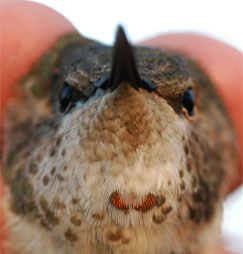 .
. 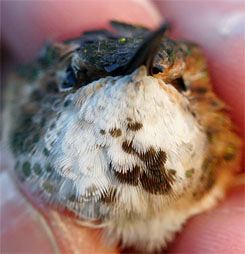
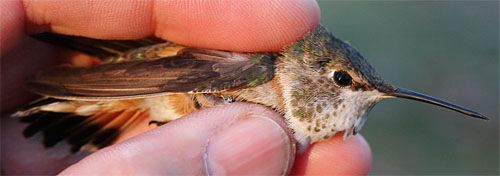
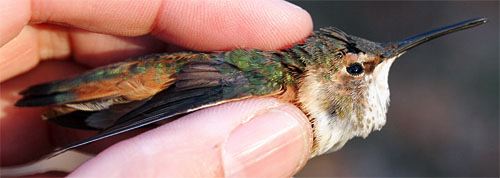
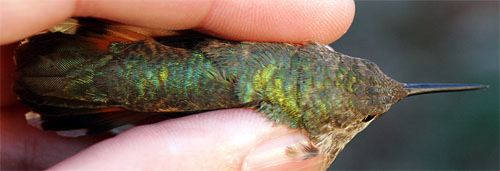


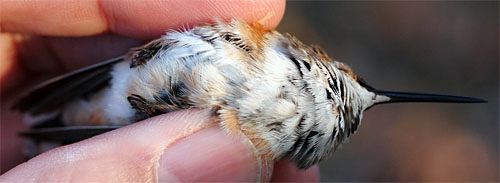
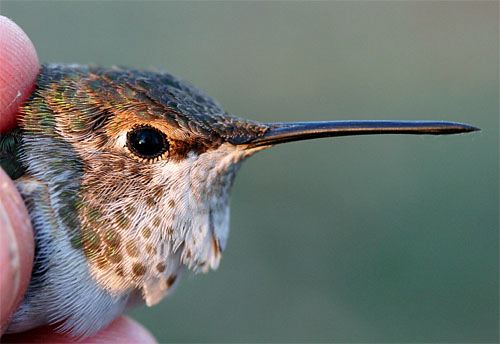
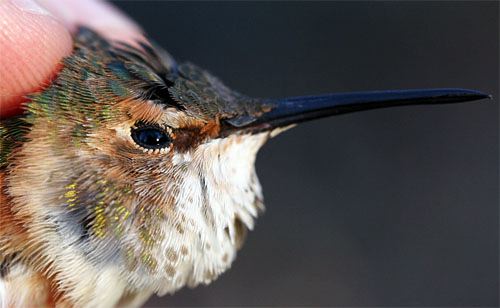
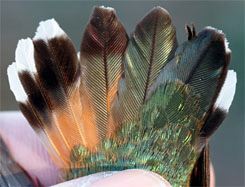 .
. 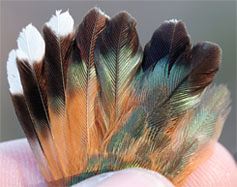
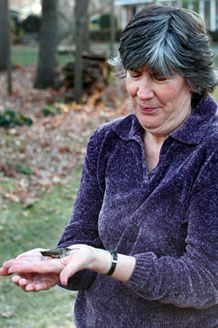 .
. 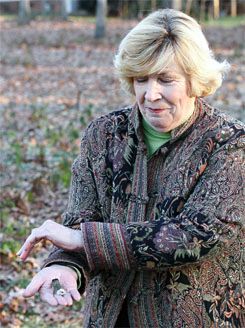
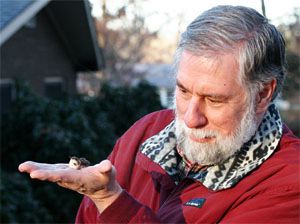 Obvious sisters Nancy Dietz (above left) and Lin Bell (above right) and Dick Dietz (below right) got to hold the hummers prior to release. Thanks very much to the Dietz's for allowing us to visit their Statesville home to band two winter vagrant hummers, and for providing great conversation--and tasty donuts. May they be graced with many more hummingbirds in every season of the year.
Obvious sisters Nancy Dietz (above left) and Lin Bell (above right) and Dick Dietz (below right) got to hold the hummers prior to release. Thanks very much to the Dietz's for allowing us to visit their Statesville home to band two winter vagrant hummers, and for providing great conversation--and tasty donuts. May they be graced with many more hummingbirds in every season of the year.
 Students at GLOBE-certified schools may submit winter hummingbird observations as part of Operation RubyThroat and GLOBE. Students can also correlate hummingbird observations with data on abiotic factors, including atmosphere, climate, hydrology, soils, land cover, and phenology. See the
Students at GLOBE-certified schools may submit winter hummingbird observations as part of Operation RubyThroat and GLOBE. Students can also correlate hummingbird observations with data on abiotic factors, including atmosphere, climate, hydrology, soils, land cover, and phenology. See the 